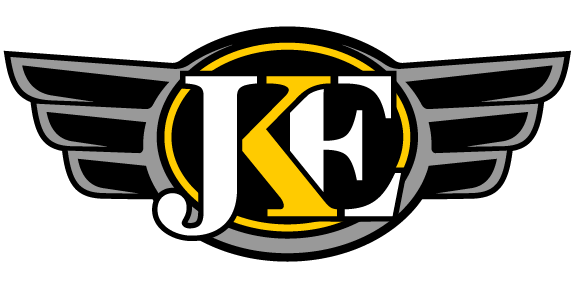From Loghead to Lockheed
Allan Haines Loughead (spelled LOUGHEAD) was born in 1889 and grew up on a ranch with his mother and 2 brothers. In 1910, Allan was able to serve as a “copilot” in a homemade airplane in Chicago. This flight was one of the first recorded dual-controlled flights in aviation history. Allan and his brother Malcolm spent a year and a half working out of a small garage during their free time to design and build the Model G.
It was an amphibious biplane. The upper wingspread was 46ft and its triangular fuselage was 30ft long. It had mid-wing ailerons and a tail that swung on a universal joint. It originally had a Kirkham 6-cylinder engine, which burst its crankcase after 15 minutes of operation. They replaced the Kirkham engine with an 80-hp water-cooled Curtiss V-8 power plant.
After WW1, the Loughhead brothers sank $29,800 into the development of their next design, the S-1. The brothers, along with engineer Jack Northrop dreamed this plane would become the “poor man’s airplane” replacing the family car and parked in every family’s backyard. Even though it was quite well designed, it was a flop on the market. In 1921 Loughead Aircraft Manufacturing Company closed its doors.
The Emergence of the Vega
After their first aircraft company closed its doors in 1921, Allan Loughead and Jack Northrop decided to design a new airplane again. Jack Northrop did a lot of the engineering for the Lockheed Vega. Northrop also suggested the name “Vega.” James D. Dole, head of the Hawaiian Pineapple Company (you know…Dole like Dole Whip) offered a $25,000 prize to the first flyer to cross from North America to Honolulu. George Hearst Jr. purchased the first Lockheed Vega before it was finished. He purchased it for a lowball price of $12,000. The Lockheed team knew this would be a loss, but they bet on the prestige and marketing they would get from the “pineapple derby.”
The Vega’s first flight was on July 4th, 1927. With less than 6 weeks before the Dole Race, Lockheed still had a lot of work to do. George Hearst wanted every safety precaution possible for Pilot Jack Frost and navigator Gordan Scott. Filled with 360 gallons of fuel, the Golden Eagle took off beautifully and headed out over the pacific. It was never seen again.
After this fateful trip, famous explorer Sir Hubert Wilkins used Vegas to explore the North Pole. As time went on, Lockheed started receiving so many orders for Vegas, they had to get a larger facility. One of the most famous Vegas was the Winnie Mae. Named after his daughter, oilman F. C. Hall used it as his executive transport plane.
Flying this specially modified Lockheed 5C Vega, famed aviator Wiley Post set many records and pioneered several aviation technologies. In 1931 Post and navigator Harold Gatty flew it around the world in eight days, and in 1933 Post became the first to fly around the world solo, taking only seven days. In 1935, while wearing the world’s first pressure suit, which he helped design, Post flew the Vega into the stratosphere, reaching 547 kilometers (340 miles) per hour while cruising in the jet stream. The Winnie Mae was named for the daughter of F. C. Hall, the original owner and a close friend of Post.
Amelia Earhart set two of her many aviation records in a bright red Lockheed 5B Vega. In 1932 she flew it alone across the Atlantic Ocean, then flew it nonstop across the United States-both firsts for a woman.
Amelia Earhart bought her 5B Vega in 1930 and called it her “Little Red Bus.” After a nose-over accident later that year, the fuselage was replaced and strengthened to carry extra fuel tanks. Three types of compasses, a drift indicator, and a more powerful engine were also installed.
On May 20-21, 1932, flying in this airplane, Earhart became the first woman (and the only person since Charles Lindbergh) to fly nonstop and alone across the Atlantic Ocean. She took off from Harbor Grace, Newfoundland, Canada, and landed 15 hours and 2,026 miles later in a field near Londonderry, Northern Ireland. The feat made Earhart an instant worldwide sensation and proved she was a courageous and able pilot.
Later that year, Earhart flew the Vega to another record. On August 24-25, she made the first solo, nonstop flight by a woman across the United States, from Los Angeles to Newark, New Jersey. The flight covered a distance of 2,447 miles and lasted about 19 hours.
Earhart sold her 5B Vega to Philadelphia’s Franklin Institute in 1933 after purchasing a new Lockheed 5C Vega. The Smithsonian acquired it in 1966.
